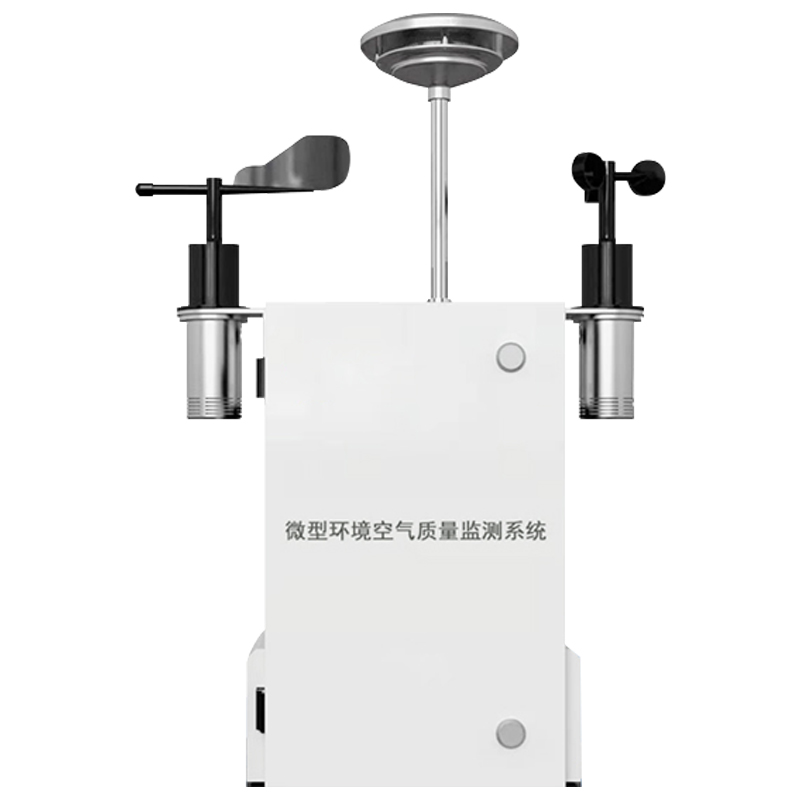Tianqiong Sensor IOT Technology Co., Ltd
Sales Manager:Ms. Emily Wang
Cel,Whatsapp,Wechat:+86 15898932201
Email:info@fengtutec.com
Add:No. 155 Optoelectronic Industry Accelerator, Gaoxin District, Weifang, Shandong, China

Sales Manager:Ms. Emily Wang
Cel,Whatsapp,Wechat:+86 15898932201
Email:info@fengtutec.com
Add:No. 155 Optoelectronic Industry Accelerator, Gaoxin District, Weifang, Shandong, China
time:2025-08-07 08:55:16 source:Weather Station viewed:202 time
Currently, the situation of urban atmospheric pollution is becoming increasingly complex, and traditional methods for monitoring atmospheric pollution sources are facing numerous challenges. The existing national control monitoring system for ambient air has problems such as a small number of monitoring points and high costs. The monitoring method that uses individual points to represent the whole area lacks timeliness, making it difficult to meet the needs of refined management and control. Moreover, it cannot fully tap the capabilities of the monitoring system in aspects such as spatio-temporal dynamic trend analysis and pollution emission reduction assessment.
In response to the requirements for the construction of an ecological environment monitoring network, a compact miniature ambient air monitoring system with low cost, multi-parameter integration and capable of achieving high-density grid layout has emerged. This system can achieve full coverage in the region, conduct atmospheric pollution monitoring with high spatio-temporal resolution, and combined with information-based big data applications, it can realize functions such as pollution source tracking, early warning and forecasting, providing timely and effective decision support for environmental pollution prevention and control.
The Atmospheric environment monitoring system integrates a variety of environmental detection sensors, which can monitor meteorological parameters and multi-factor air indices in real-time. It is powered by solar cells and equipped with lithium batteries as reserve energy, enabling all-weather data collection. The monitored on-site data is transmitted to the monitoring platform through wireless or wired networks. Multiple monitoring stations distributed in a certain area form an effective monitoring network, facilitating managers to make environmental protection decisions.
In terms of big data applications, combined with GIS maps, it can display in real-time the station information and monitoring data of all monitoring points in the monitored area. It can realize the statistics and comparison of environmental air quality status in different regions, points and time periods, discover the laws of pollution changes, locate the regions and time periods with severe pollution, and provide a basis for environmental monitoring and decision-making.
The working process is as follows: various sensors and analyzers sequentially send multi-channel test signals into the independent transmission channels of wireless communication node devices through interface protocols, which are then processed and input into the data collector; the collector transmits the data through the wireless data transmission terminal to the atmospheric grid monitoring platform system via the network; the system receives and stores the monitoring data in accordance with regulations, conducts parsing and processing, and timely displays graphics and analyzes data on the platform.
There are three reasons why the Atmospheric environment monitoring system can become the mainstream for precise pollution control: first, the technical methods are different. Although national control points can monitor multiple indicators, they cannot analyze a single indicator. In contrast, miniature instruments adopt advanced technologies, which can analyze pollution sources in small areas, trace major pollutants and propose control measures; second, there is a significant difference in cost input. The micro-stations for grid monitoring have low costs and are convenient to maintain, making them suitable for large-scale and high-density deployment. They can collect accurate data, grasp pollution trends and realize source tracing, which is incomparable to national control points; third, the subsequent maintenance methods are different. National control points have high costs and operating expenses, making it difficult to deploy them precisely over a large area, and there is the problem of unclear pollution sources. However, miniature instruments can analyze the source, time and composition of pollution, with simple maintenance and low operating expenses.

The Portable Weather Station is a lightweight monitoring device that integrates the functions of meteorological data observation, recording, and analysis. Its core positioning is to meet the meteorological monitoring needs in various mobile scenarios and emergency situations. With practicality and c...
In the road traffic environment safety monitoring system, the Laser Snow Depth Monitor, especially in areas with frequent snowfall in winter, can accurately and real-time monitor the depth of snow on the road surface. It provides key data for traffic management departments, helping to ensure road sa...
The Portable Weather Station enhances monitoring convenience and efficiency with its lightweight, integrated design, meeting the demand for rapid and accurate acquisition of meteorological data across multiple fields.The core of achieving the lightweight and integrated design of such devices lies in...
What types of Water Quality Monitors are there?In an era when environmental protection is receiving increasing attention, water quality monitoring plays a vital role in maintaining ecological balance and safeguarding human health. The advent of online water quality monitoring instruments has s...